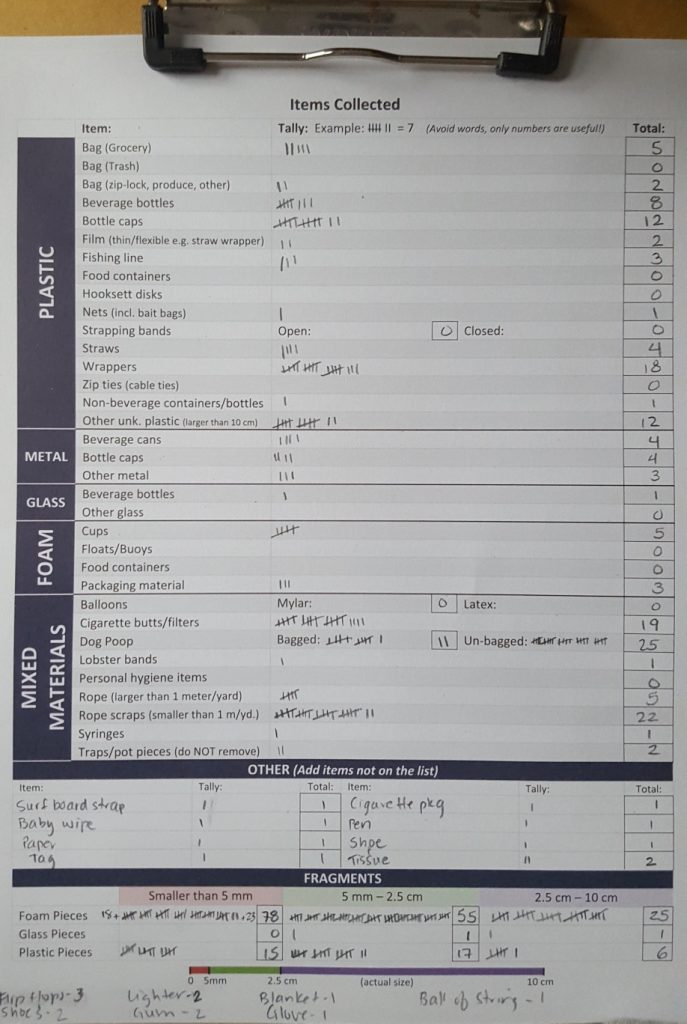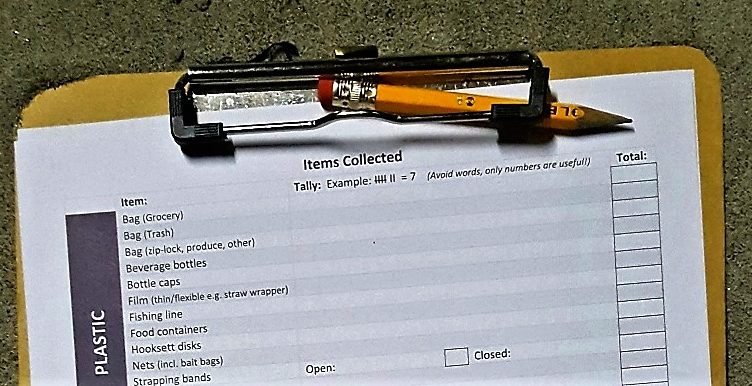It’s a project several years in the making… new data cards!
Since 2001, we’ve conducted beach cleanups from southern Maine to northern Massachusetts. At each cleanup, we use data cards to record the litter that we find. This information allows us to find trends in litter, problem areas (we picked up so many straws in 2016 that it prompted us to start our Skip the Straw campaign) and provides data for campaigns and policy change (our data has been requested to help with legislation related to bag bans, dog waste and balloon releases).
The data cards we’ve been using since 2001 were based on data cards from a nationwide project called the National Marine Debris Monitoring Program. Over the past several years, we realized these data cards didn’t track all the items we’d like to track, such as some types of plastic items and smaller microplastics. We decided we needed a more robust data card. But this isn’t an easy undertaking – if we change the data card, it becomes more difficult to compare our marine debris results from year to year, and we also have to update the database that we use to enter our data. But a more comprehensive data card would give us a more complete picture of the threat marine debris poses to our local coastline, and point to solutions to prevent future pollution.

We’ve also noticed an interesting trend over the last 16 years. When we first started our cleanups, many volunteers were reluctant to collect data, and often referred to it as “busy work.” Now, we find volunteers that are eager to record as many litter items as possible and participate in our long-term research as citizen scientists.
The Process
To get started, we surveyed our Adopt-a-Beach groups and other regular cleanup volunteers to see what they thought was missing from our current data card. We also evaluated cleanup data cards from other organizations across the world. While many data cards record similar items (e.g., cigarette butts, plastic bags, beverage bottles), the litter found in different regions is different enough that it is difficult to make a standardized data card for the world, or the country, or even a region. For example, on our NH beaches, we find lots of cigarette butts, bottle caps, and fishing gear. When we’ve done cleanups on Cape Cod, we’ve found those things but also a much higher prevalence of balloons and personal hygiene items. Unfortunately, there isn’t a one-size fits all data card.
Based on our cleanup experience and feedback from volunteers, we designed a new data card. We then had volunteers examine it and provide feedback, and then tested it at several cleanups to ensure we weren’t missing any litter items and that the data card was easier to use. We also enlarged the data card from a half-page to a full page to give volunteers more room to record their data.
So, what did we change?
In addition to making the card larger and easier to read, we categorized the litter items by their composition, which will hopefully make it easier to find them when recording data. We also added several items we find often on our beaches, including zip ties, wrappers, and those ubiquitous Hooksett disks that have been washing up since March 2011. We also added some user-friendly instructions to the front of the card, along with pictures of some of the more confusing litter items.

Along with the new data card, we’ll be updating the online database we use to record our litter data, and adding data feeds to this web site so you can see updated reports on the litter we’ve found at various beaches over the years. More on that in a future post!
Learn More:
Special thanks to Michael Toepfer from UNH Cooperative Extension for his help with our cleanup database, and to the volunteers who provided input on the data cards!






